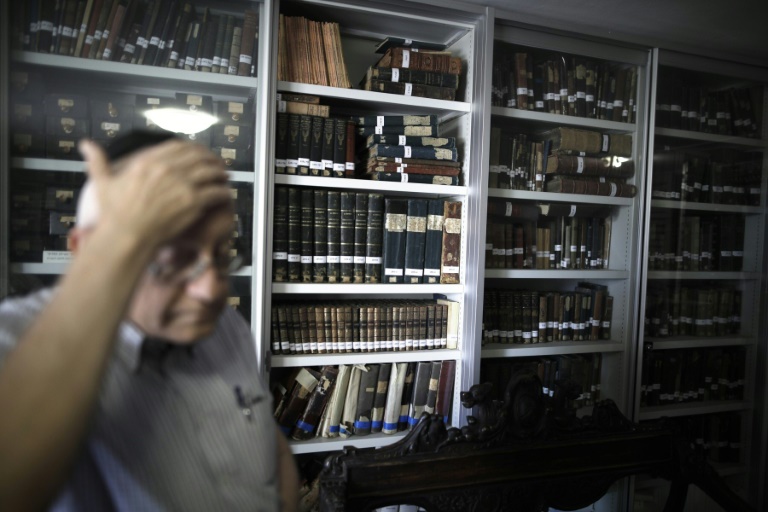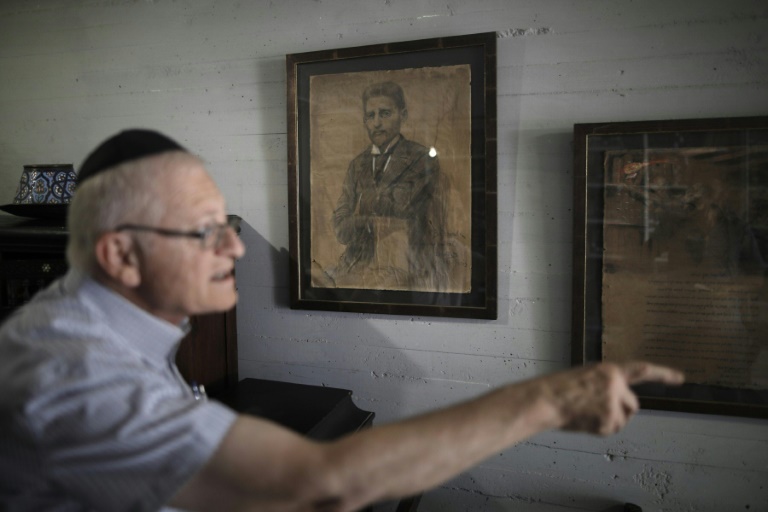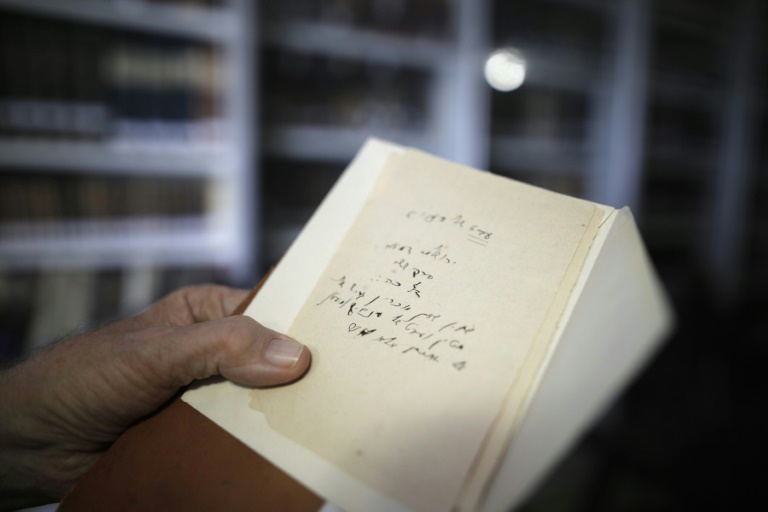The bespectacled man with two pens in his shirt pocket and a black skullcap atop grey hair points to his computer screen and explains an epic project spanning generations.
Gabriel Birnbaum, 66, is a senior researcher helping document and define every Hebrew word ever — from ancient texts such as the Dead Sea Scrolls to the contemporary novels of Israeli literary figures like Amos Oz.
It is a mammoth task under way since 1959, and even though a milestone has been reached on the digital project, there are still many years to go.
Called the Historical Dictionary Project at Israel’s Academy of the Hebrew Language, it will serve as an invaluable resource for scholars, writers and linguists.
But it will also act as an anchor for Hebrew, the ancient language revived in spoken form in the 19th century after some 1,700 years.
Work completed so far is already available to the public online.
For Birnbaum, who has been working for the project for about 13 years and is charged with writing dictionary entries for the words, the project’s researchers “understand that we do something very important for the Jewish people”.
“For linguistics in general also, because it’s a huge linguistic project in itself,” he added.
At his book-lined office at the project’s headquarters in Jerusalem, he clicked through to various entries.
The Hebrew word for table, for example, brought up almost 3,000 occurrences, including from the Bible’s Book of Exodus in a section where God tells Moses to create a tabernacle.

The mammoth task entitled the Historical Dictionary Project at Israel’s Academy of the Hebrew Language began in 1959
But it is not all business for Birnbaum.
Another tab on his browser was open to a song by Leonard Cohen, the late musician whose songs include references to Jewish tradition. Birnbaum is a big fan.
– A dramatic revival –
While such historical dictionaries exist for other languages — perhaps most notably the monumental Oxford English Dictionary — Hebrew’s status may give the project added importance.
Earlier incarnations of the language were spoken by ancient Jewish communities where the modern state of Israel is located today.
As Jews were forced into exile, Hebrew as a spoken language began to fade, though it remained in use in written form.
After some 1,700 years, it was revived in the late 19th century as part of the push by Zionist Jews to resettle in the lands from where their ancestors fled.
It is now an official language of Israel and is considered history’s sole example of such a dramatic revival.
“It’s a miracle,” said Birnbaum, a father of five who moved to Israel from Hungary when he was six years old.
The headquarters of the project includes furniture and books from Eliezer Ben-Yehuda, seen as the father of the effort to revive Hebrew.

The headquarters of the project includes furniture and books from Eliezer Ben-Yehuda, seen as the father of the effort to revive Hebrew
Ben-Yehuda, who died in Jerusalem in 1922, began work on the first modern Hebrew dictionary, and slips of paper on which he wrote entries by hand are included in the project’s collection.
Around 25 people currently work on the project. When it started in 1959, there were only five people, said Birnbaum, and they used an early form of computers for the work.
Most of the ancient manuscripts and inscriptions are located outside Israel, requiring researchers early on to rely on photostats.
More recently, images of many are online, including the Gezer calendar, considered by some to be the oldest known Hebrew writing, dating to the 10th century BC.
– ‘Task is great’ –
All ancient literature will be included because examples are relatively few, but for later eras, representative samples are chosen.
In the beginning, researchers did not focus on the Bible because reliable biblical dictionaries already existed, opting to delve into other ancient works such as the Talmud.

The project’s collection includes slips of paper on which Eliezer Ben-Yehuda, who began work on the first modern Hebrew dictionary, wrote entries by hand
Since then, biblical texts have been added.
Researchers study texts for words and input them by hand.
Some 50,000 entries are already included along with linguistic analysis, and definitions began to be written in 2005 — a milestone for the project.
“The idea is that it will be an electronic database,” said Steven Fassberg, the project’s associate editor.
“I don’t think anybody would even venture how many years” it will take to complete, he said.
Charlotte Brewer, a professor at Oxford’s Hertford College who researches the Oxford English Dictionary, said the project “has obviously been carefully planned”.
“Dictionary projects which set out to chart the history of a nation’s language are usually closely bound up with cultural and ideological beliefs about nationhood, patriotism, etc, and this project looks to be no exception,” she said.
Birnbaum takes pride in the work begun by Ben-Yehuda.
He points out a plaque in the room where Ben-Yehuda’s furniture is displayed and which once hung above his desk.
Quoting a traditional Jewish teaching, the plaque says: “The day is short and the task is great.”
Download our app




